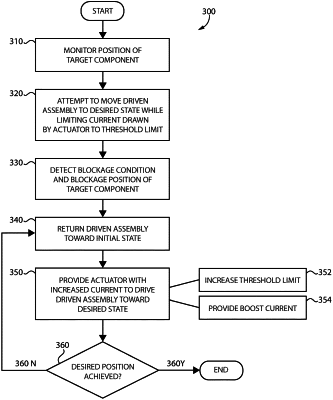| CPC E05B 47/0012 (2013.01) [G07C 9/00571 (2013.01); H02K 7/06 (2013.01); E05B 65/108 (2013.01); E05B 2047/0016 (2013.01); E05B 2047/0057 (2013.01); E05B 2047/0067 (2013.01)] | 19 Claims |

|
1. A method of operating an access control device including a lock component and an electromechanical actuator operably connected with the lock component, wherein the lock component has a first position and a second position, wherein one of the first position or the second position corresponds to a locked state of the access control device, and wherein the other of the first position or the second position corresponds to an unlocked state of the access control device, the method comprising:
operating the electromechanical actuator in a first manner to drive the lock component from the first position toward the second position, wherein operating the electromechanical actuator in the first manner includes limiting a current drawn by the electromechanical actuator to a first threshold limit;
detecting a blockage preventing the lock component from moving in a first direction beyond a blockage position located between the first position and the second position;
in response to detecting the blockage of the lock component, operating the electromechanical actuator in a second manner to thereby cause movement of the lock component in a second direction opposite the first direction, thereby causing the lock component to move from the blockage position toward the first position; and
operating the electromechanical actuator in a third manner to drive the lock component in the first direction and toward the blockage position, wherein operating the electromechanical actuator in the third manner comprises providing the electromechanical actuator with an increased current greater than the first threshold limit, thereby increasing a force exerted on the lock component as the lock component approaches the blockage position such that the lock component passes beyond the blockage position.
|